Mary Jones, Richard Fosbery, Dennis Taylor and, Jennifer Gregory Solutions for Chapter: Gas Exchange, Exercise 6: EXAM-STYLE QUESTIONS
Mary Jones Biology Solutions for Exercise - Mary Jones, Richard Fosbery, Dennis Taylor and, Jennifer Gregory Solutions for Chapter: Gas Exchange, Exercise 6: EXAM-STYLE QUESTIONS
Attempt the practice questions on Chapter 9: Gas Exchange, Exercise 6: EXAM-STYLE QUESTIONS with hints and solutions to strengthen your understanding. Biology for Cambridge International AS & A Level coursebook 2nd Edition Digital Access solutions are prepared by Experienced Embibe Experts.
Questions from Mary Jones, Richard Fosbery, Dennis Taylor and, Jennifer Gregory Solutions for Chapter: Gas Exchange, Exercise 6: EXAM-STYLE QUESTIONS with Hints & Solutions
The diagram shows two cells from the lining of the trachea.
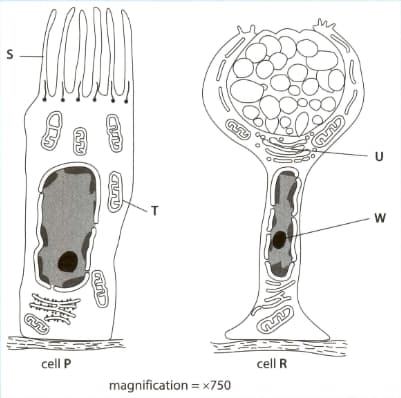
The magnification is a diagram is 750.
Use a formula to calculate the actual length of cell P.
The diagram shows two cells from the lining of the trachea.
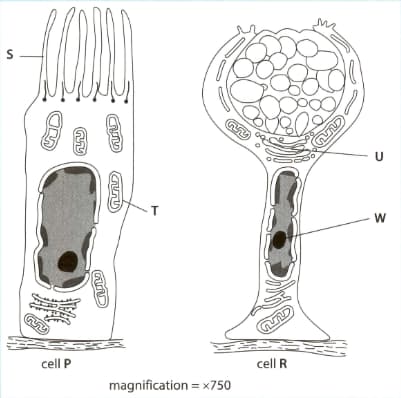
The magnification is a diagram is 750.
Use a formula to calculate the actual length of cell P. Give your answer to the nearest micrometre.
The diagram shows two cells from the lining of the trachea.
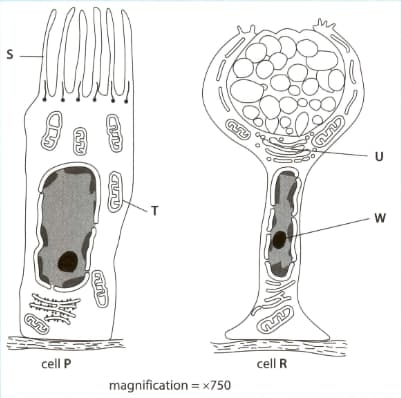
Describe the role of cell P and Cell R in the gas exchange system.
Explain the role of elastic fibres and smooth muscles in the gas exchange system.
The following table shows the partial pressure of oxygen and carbon dioxide in four places in human body.
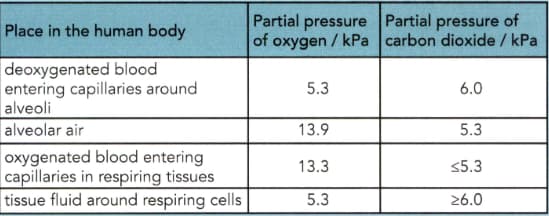
Use the information given in the tables to describe the process of exchange between alveolar air and deoxygenated blood.
The following table shows the partial pressure of oxygen and carbon dioxide in four places in human body.
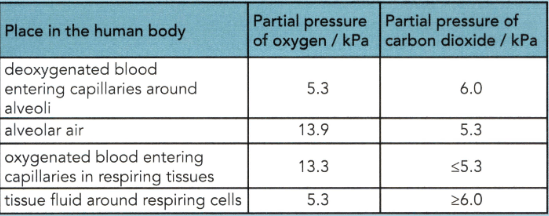
Use the information given in the tables to describe the process of exchange between the oxygenated blood and respiring tissue.
Explain why the composition of alveolar air remains fairly constant.
Suggest three ways in which the gas exchange system responds to the demands of exercise.
